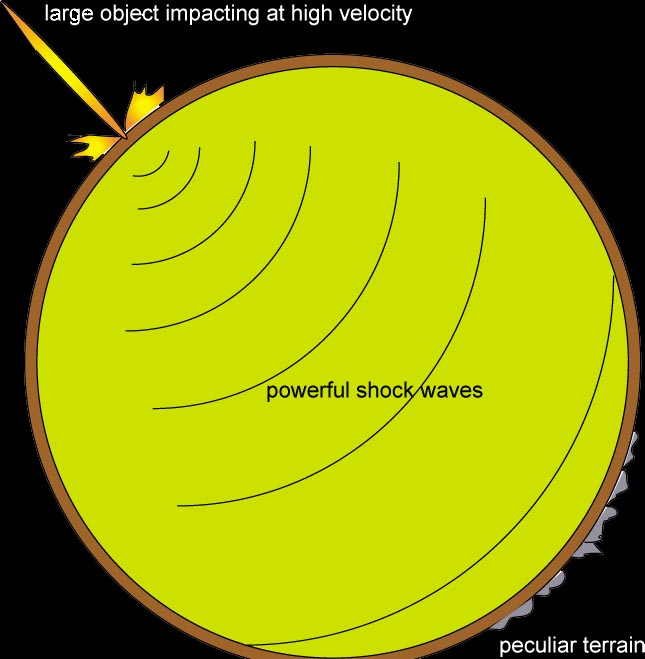Mercury
is the innermost planet of our solar system.
It is located an average of .63 AU away from the Sun. Mercury is
named after the swiftest Roman god because of it's orbital speed,
which is 1.5 X that of Earth!
All of Mercury's surface is
covered with craters of various sizes.
Why is
this?
Geologist have classified Mercury's
craters as being primary and secondary. A primary crater is created
when an object ranging in size from a pin head to large building or bigger
impacts on Mercury's surface, creating a crater. Secondary craters
are formed when the debris from the primary crater is exploded up and outward
and impacts around the primary crater forming smaller new craters.
Can you
think of an experiment that might simulate the creation of primary
and secondary craters?
A long time ago an object bigger than
the state of Rhode Island hit Mercury at a place called the Caloris Basin.
When this happened, not only did it create a large primary and mulitple
secondary craters, it also sent powerful shock waves through the planet
to the other side. When these shock waves hit the other side of the
planet they caused the surface to become rough and uneven. This type
of terrain is called peculiar terrain.
 Can you think of any other
planets that might have peculiar terrain?
Can you think of any other
planets that might have peculiar terrain?